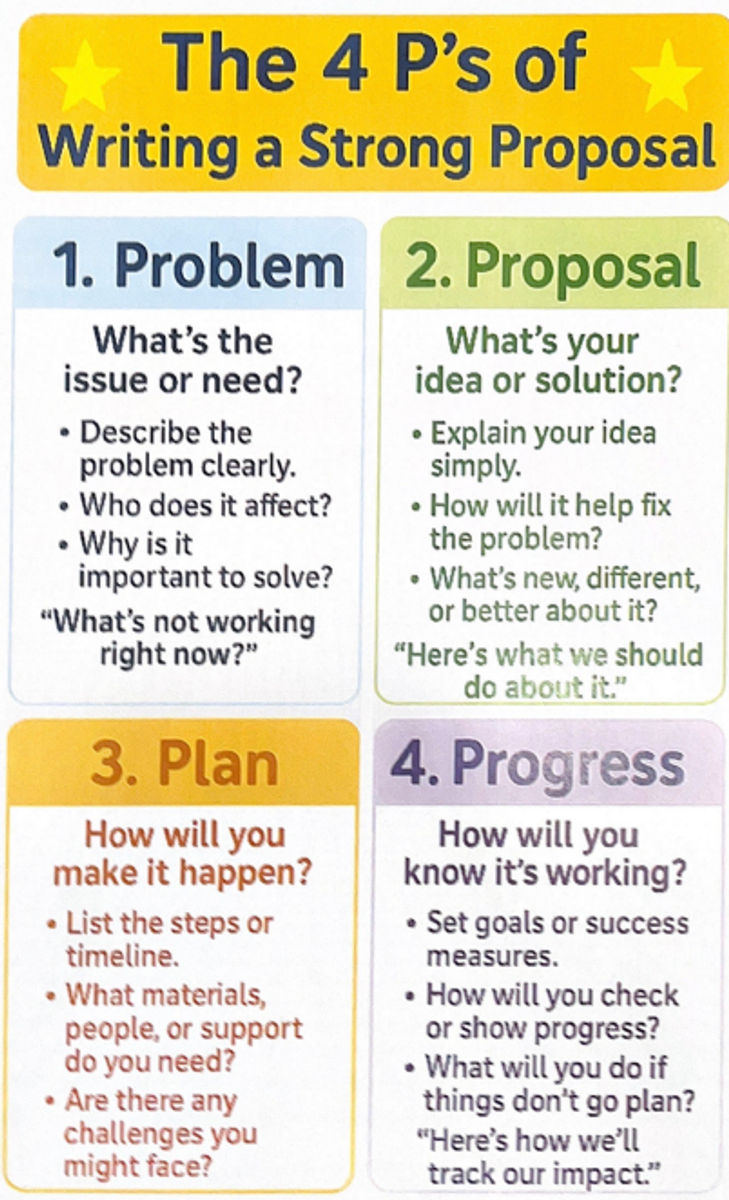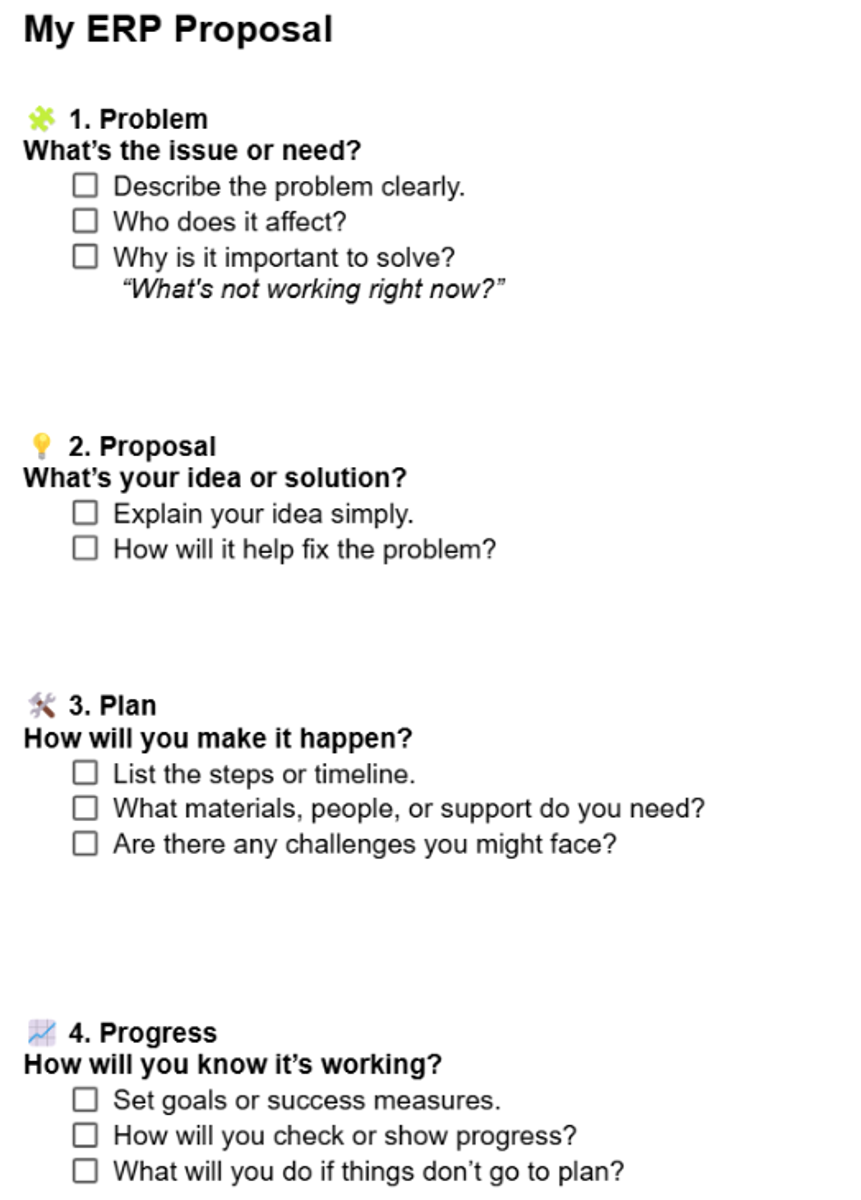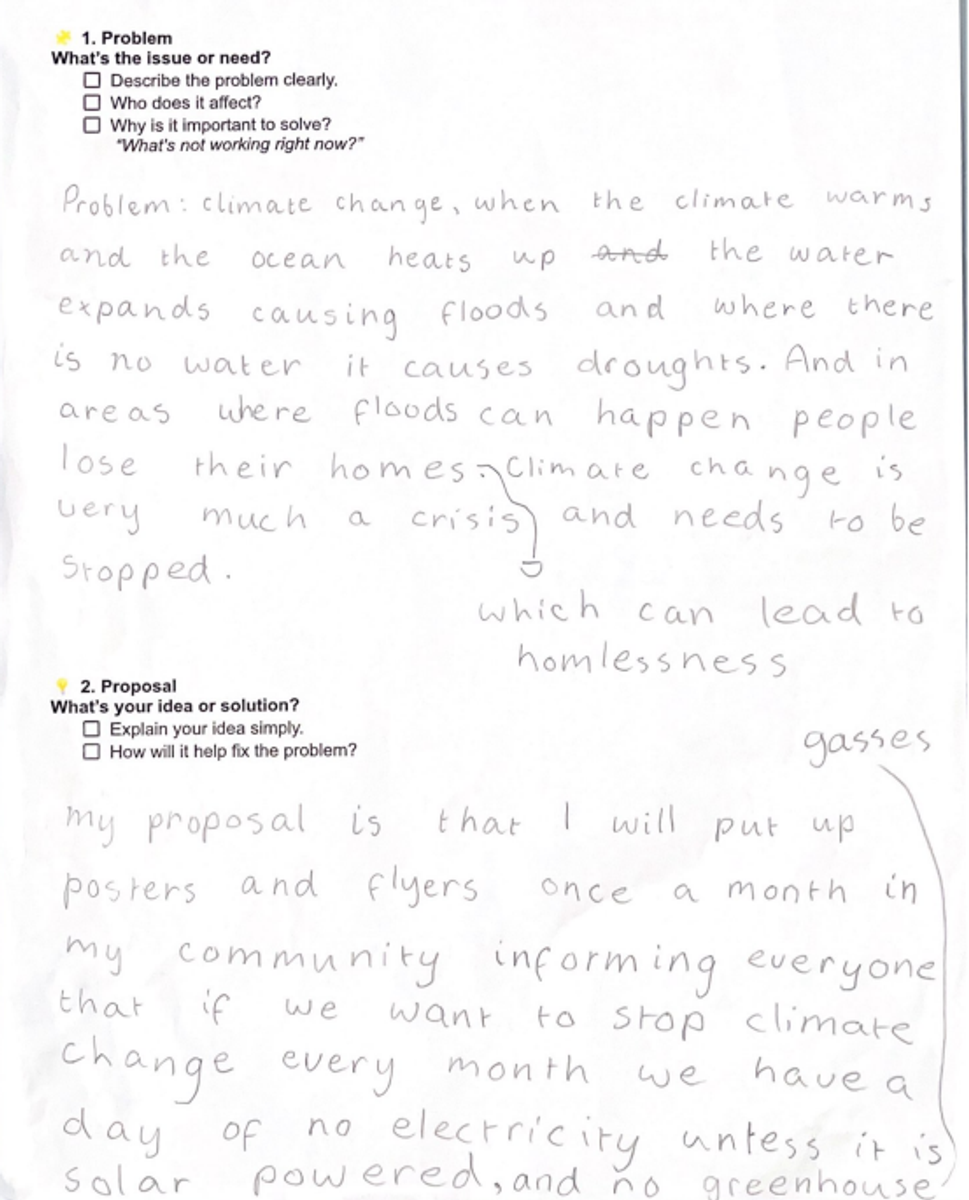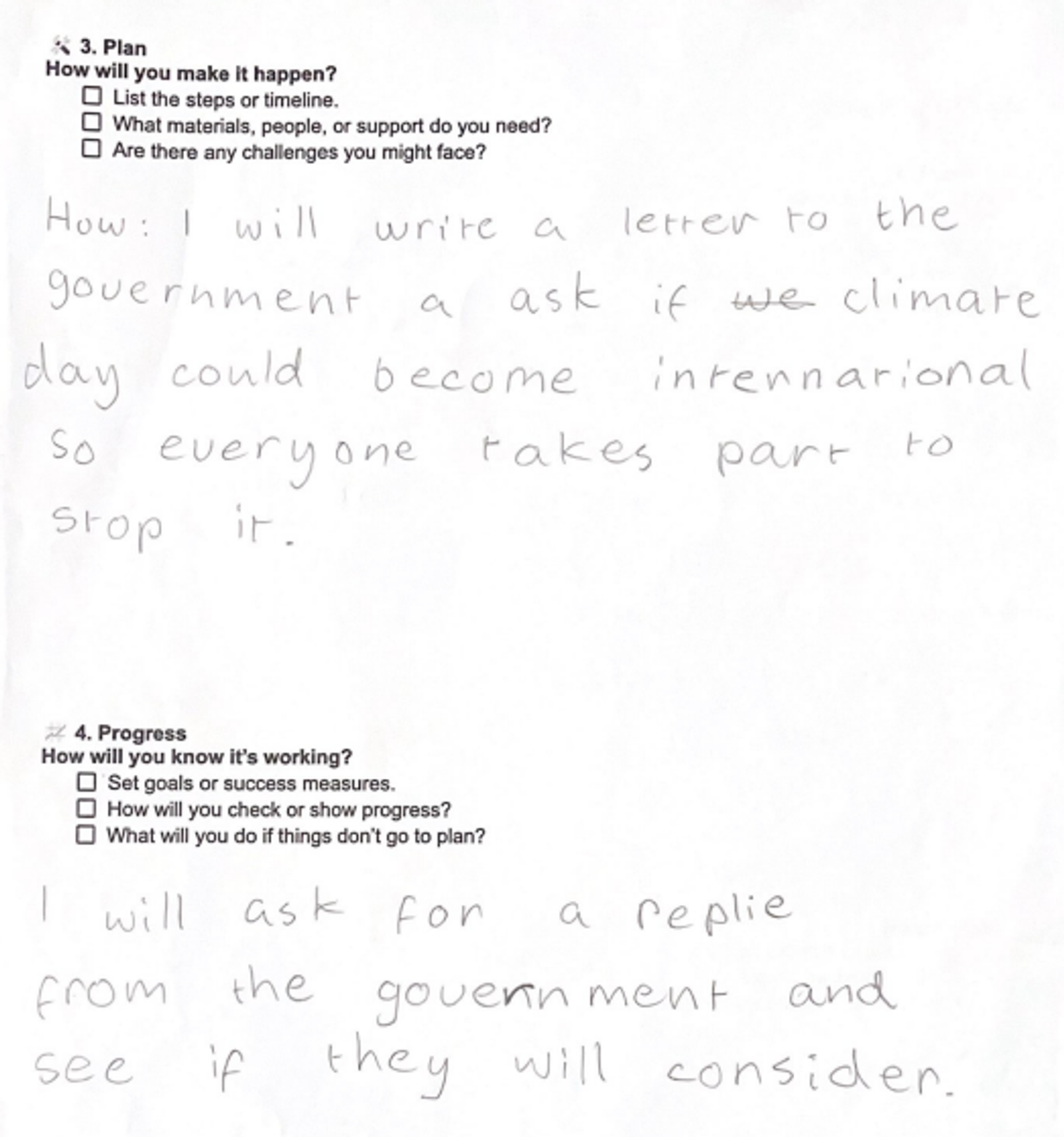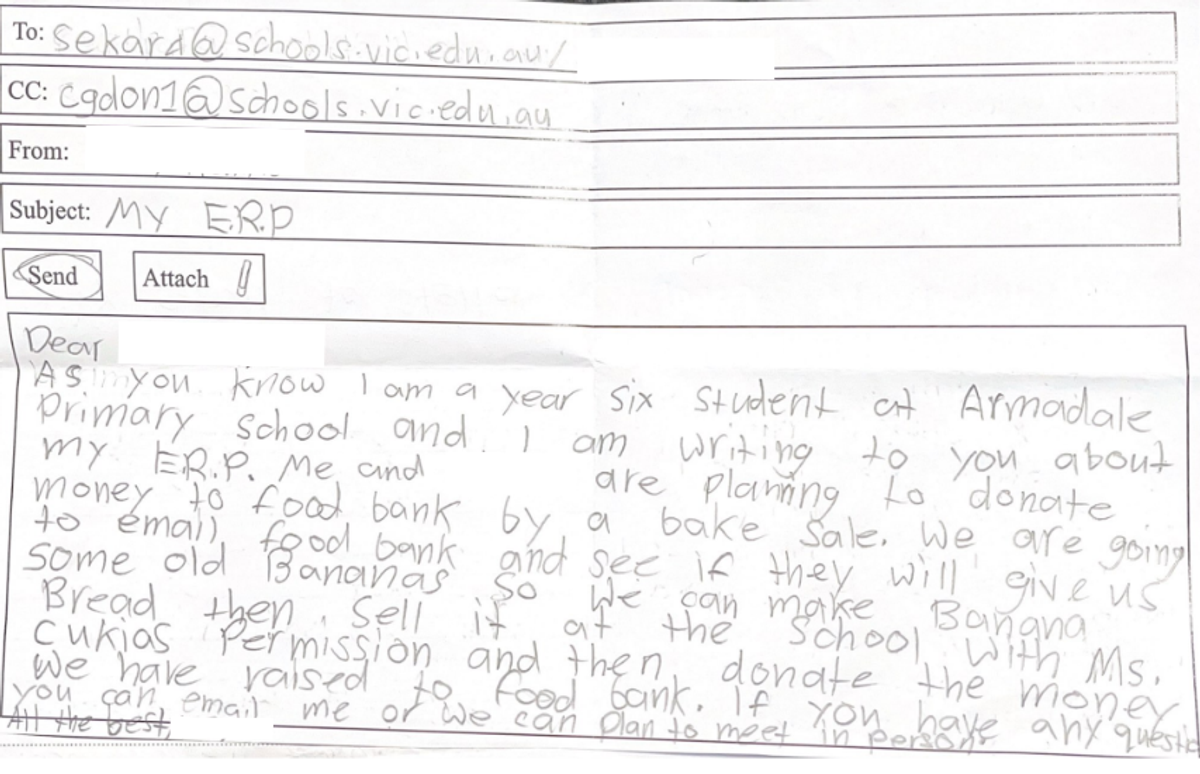Year 5/6 Bulletin
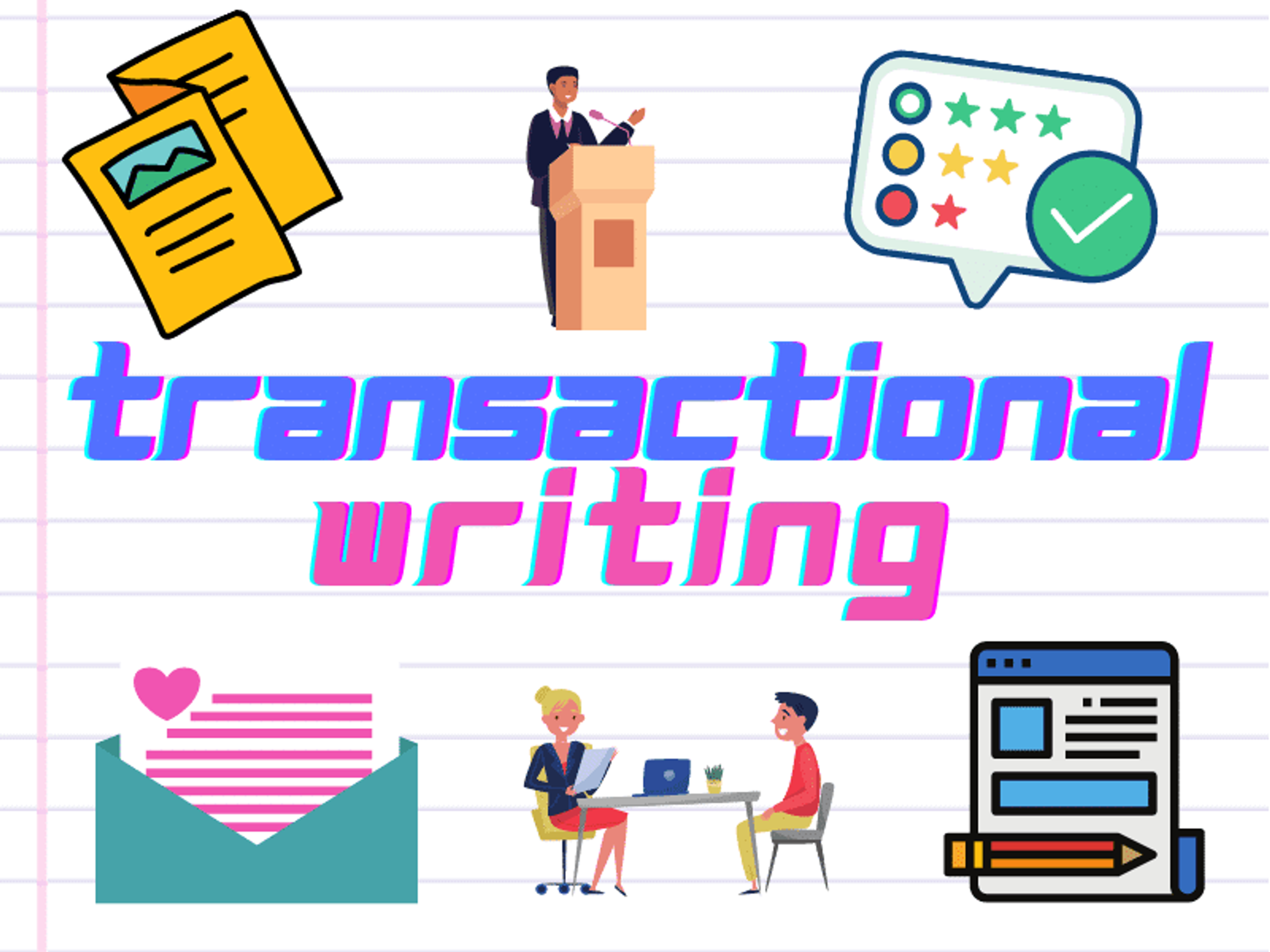
Transactional Writing
As part of our writing program this term, the students have been developing their skills in Transactional Writing. This type of writing focuses on real-world communication with a clear purpose and audience. It includes emails, speeches, letters, and proposals, designed to inform, persuade, request, or advise.
These writing forms help students build essential skills in structure, tone, and clarity, while learning how to tailor language depending on who they're writing to and why.
Writing Focus: Writing a proposal
Learning Intention: Learning how to plan a clear, convincing proposal that outlines a problem and presents a thoughtful solution.
Whole Class Focus:
Together, we explored what makes an effective proposal. We unpacked the structure (introduction, problem, proposed solution, benefits, and conclusion) and discussed using persuasive and formal language. The students were given an Anchor Chart outlining the
4 P's of writing a strong proposal and a recording scaffold with prompts.
Small- Independent Task
Students used a provided proposal writing template to plan a proposal related to their ERP topic. This allowed them to link their writing with their inquiry learning, presenting innovative ideas, solutions, or improvements inspired by their research.
Whole
Students shared their proposals and received verbal feedback on their plans.
Next Steps – From Proposal to Email
In our following session, students used their completed proposal plans to construct formal emails.
The process was first modelled for them, with the teacher constructing an example email. Students were shown how to transform their proposal content into a concise, persuasive, and polite email format.
To support this, students were given a scaffold that included the following elements:
- Subject Line: Clearly stating the purpose (e.g. “Proposal for Reducing Playground Waste”)
- Greeting: Using formal greetings such as “Dear Mrs Cukier," or "To whom it may concern"
- Opening Statement: Introducing themselves and their reason for writing
- Body Paragraph(s): Summarising the problem and proposed solution using persuasive language
- Call to Action: Politely requesting feedback, support, or consideration (e.g. “I hope you will consider this idea and I would love to hear your thoughts.”)
- Sign Off: Using an appropriate closing, such as “Kind regards,” or “Sincerely,” followed by their name
This step-by-step approach allowed the students to see the connection between planning and purposeful communication.
What you can do at home:
Here are a few simple ways you can support your child’s learning at home:
- Encourage purposeful writing: Ask your child to help write an email to a family member, a thank-you note, or a message to a local business. Discuss the tone, structure, and clarity together.
- Talk about real-world communication: Share examples of times you’ve written proposals, emails, or letters. Whether at work, in the community, or for everyday problem-solving. This helps your child see the value of these skills in adult life.
Happy writing everyone!
Jenny and Luca
Year 5/6 Team

